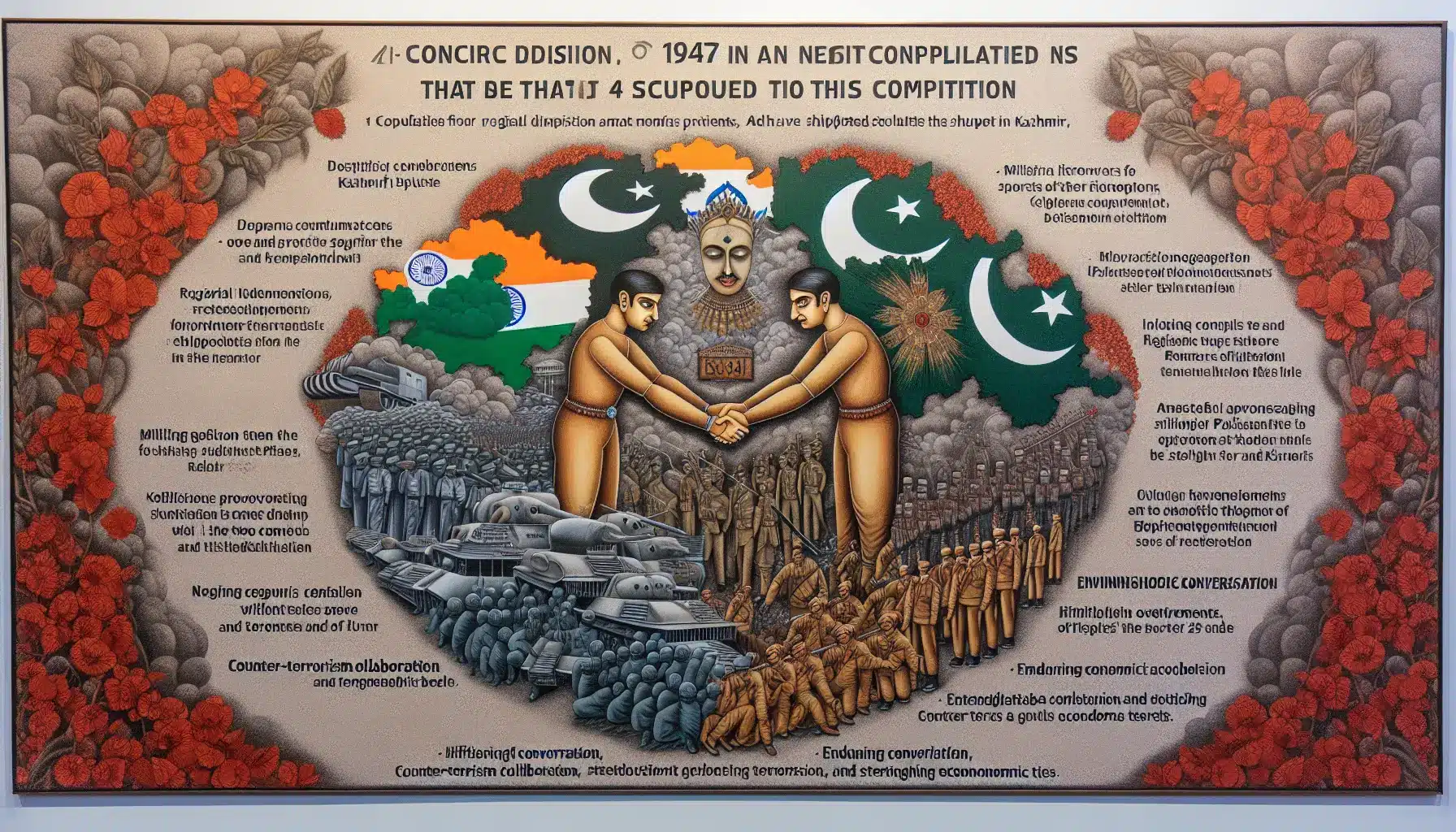
Estimated reading time: 15 minutes
Key Takeaways
- Historic Roots: The rivalry started with the 1947 partition of British India.
- Kashmir Dispute: A central element of the conflict, involving geopolitical, cultural, and resource issues.
- Four Major Wars: Each war has defined the nature and scope of the conflict.
- Beyond Warfare: Involves complex diplomatic and economic dimensions.
- Nuclear Impact: Nuclear capabilities influence conflict dynamics and international diplomacy.
- Path to Peace: Requires addressing historical grievances and fostering dialogue.
Table of Contents
- The Origins of a Historic Rivalry
- The Kashmir Question: Heart of the Conflict
- Four Major Wars: Defining Moments in the Conflict
- Recent Developments: The 2025 Crisis
- Beyond Military Conflict: Other Dimensions of the Rivalry
- The Nuclear Dimension
- Looking Forward: Prospects for Peace
- Frequently Asked Questions
The Origins of a Historic Rivalry
The conflict between India and Pakistan stands as one of the world’s most significant geopolitical challenges. Born from the 1947 partition of British India, this rivalry has shaped the destiny of over a billion people across South Asia. The partition created two separate nations: India, with a Hindu majority, and Pakistan, with a Muslim majority. This separation triggered one of history’s largest mass migrations, with approximately 15 million people displaced and hundreds of thousands losing their lives in the ensuing violence.
The Kashmir Question: Heart of the Conflict
At the center of India-Pakistan tensions lies Kashmir, a region both countries claim entirely but control only partially. The dispute began immediately after partition when Kashmir’s Hindu ruler chose to join India, leading to the first Indo-Pakistani war (1947-1948). This conflict established the current “Line of Control,” effectively dividing Kashmir between the two nations.
- Strategic importance due to its geographical location
- Access to crucial water resources
- Strong cultural and religious significance for both nations
- Symbol of national identity and sovereignty
Four Major Wars: Defining Moments in the Conflict
The relationship between these nuclear-armed neighbors has been marked by four significant wars:
1. First Kashmir War (1947-1948)
This initial conflict set the template for future tensions, ending with a UN-mediated ceasefire and the division of Kashmir.
2. Second Indo-Pakistani War (1965)
Triggered by Pakistan’s Operation Gibraltar, this war represented a major escalation in the conflict, though it ended without significant territorial changes.
3. Bangladesh Liberation War (1971)
This conflict resulted in Pakistan’s most significant defeat, leading to the creation of Bangladesh and demonstrating India’s military superiority in conventional warfare.
4. Kargil War (1999)
The last full-scale conflict between the nations proved that even in the nuclear age, conventional warfare remained possible, though with increased international scrutiny and pressure for resolution.
Recent Developments: The 2025 Crisis
The April 2025 terror attack near Pahalgam marked a dangerous new chapter in Indo-Pakistani relations. The incident, which claimed dozens of lives, led to:
- Indian missile strikes on targets in Pakistan and Pakistan-administered Kashmir
- Pakistani military retaliation
- Suspension of bilateral agreements
- Heightened international concern about nuclear escalation
Beyond Military Conflict: Other Dimensions of the Rivalry
The India-Pakistan conflict extends far beyond military confrontations:
Diplomatic Relations
Regular diplomatic ties remain strained, with peace initiatives frequently derailed by security incidents or domestic political considerations.
Economic Impact
The conflict has severely limited economic cooperation between the nations, affecting:
- Direct trade opportunities
- Regional economic integration
- Infrastructure development
- Tourism and cultural exchange
The Nuclear Dimension
Both countries’ nuclear capabilities add a crucial layer of complexity to the conflict. This nuclear deterrence has:
- Prevented large-scale conventional wars since 1998
- Created new security challenges and risks
- Attracted significant international attention and mediation efforts
- Changed the nature of military strategy and conflict resolution
Looking Forward: Prospects for Peace
The path to peace between India and Pakistan requires addressing several key challenges:
- Resolution of the Kashmir dispute
- Effective counter-terrorism cooperation
- Building trust through sustained dialogue
- Expanding people-to-people contacts
- Developing economic ties
The future of South Asian stability depends largely on how these two nuclear powers manage their relationship. While complete resolution may seem distant, steps toward de-escalation and dialogue remain crucial for regional peace and global security.
This enduring conflict reminds us that historical divisions can cast long shadows over international relations, affecting generations of people and requiring sustained diplomatic efforts for resolution.
Frequently Asked Questions
What was the cause of the 1947 partition of India and Pakistan?
The 1947 partition was primarily caused by religious differences and the demand for separate nations by the Muslim League, leading to the creation of a Muslim-majority Pakistan and a Hindu-majority India.
Why is Kashmir such a contentious issue between the two countries?
Kashmir is contentious due to its strategic importance, cultural significance, and the religious diversity of its population, leading both nations to claim it entirely.
Have any peace initiatives been successful between India and Pakistan?
While several peace initiatives have been attempted, including the Lahore Declaration and Agra Summit, they often fall through due to incidents of violence or political changes.
What role does international diplomacy play in the India-Pakistan conflict?
International diplomacy plays a crucial role in de-escalating tensions and facilitating dialogue, often involving mediation from countries like the United States and organizations like the UN.
How do nuclear capabilities affect the conflict between India and Pakistan?
Nuclear capabilities act as a deterrent against full-scale wars, but they also introduce risks of nuclear escalation and require careful diplomatic handling to prevent catastrophic outcomes.



